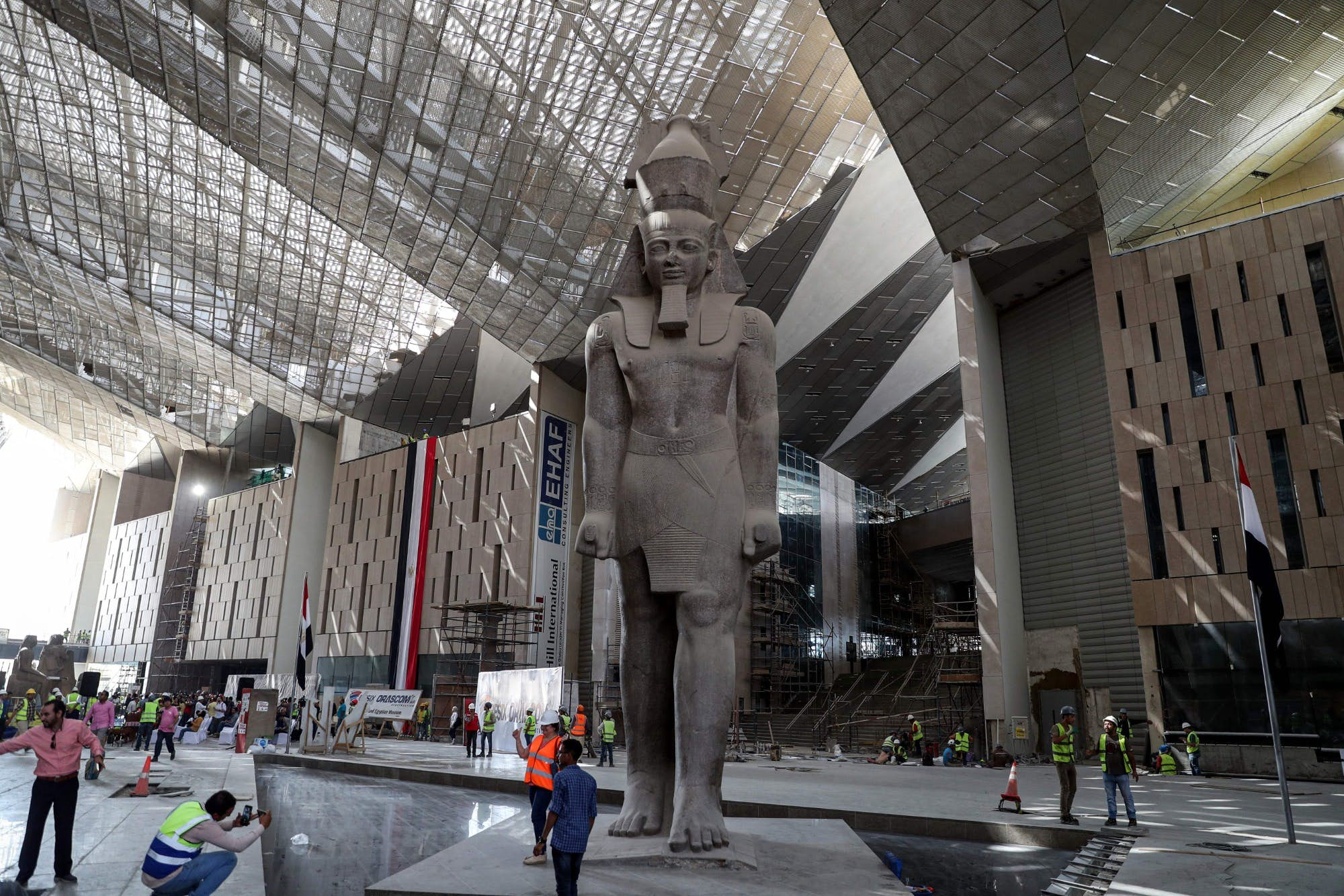
Amidst the world’s most venerable museums which narrate diverse histories, the Grand Egyptian Museum (GEM) proudly stands tall as a silent beacon for a grand civilization carved into the bedrock of time, now extending its roots into the future.
This architectural marvel does not settle for simply being the largest in size; it surpasses other museums through its location, design, and the depth of its visitor experience.
Based on multiple international reports, the GEM proclaims itself as the world’s largest museum dedicated to a single civilization, spanning an area of approximately 50–120 acres and housing over 100,000 artifacts.
Located on the Giza Plateau, where the Pyramids whisper tales of ancient kings, the GEM acts as a visual and historical continuation of this Pharaonic landscape, forming a bridge between the past and modernity.
It does not display history as a distant memory but presents it as a living experience that fundamentally reshapes the world’s understanding of civilizations.
Dubbed as “Egypt’s gift to the world,” the GEM is an achievement not only in regards to the restoration and display of artifacts, but in redefining the global museum experience.
Its architectural superiority stems from strategic and experiential advantages unavailable to any other museum, making it a unique destination that, according to reports from Daily Sabah and Expeditions.com, surpasses established institutions like the Louvre and the British Museum.
1. The World’s Largest Museum Dedicated To A Single Civilization
The GEM surpasses all its international counterparts in both concept and scale.
- Largest of its Kind: It is the largest museum in the world devoted entirely to a single civilization, specifically Ancient Egyptian civilization, which spans various eras (Pharaonic, Greek, and Roman).
- Scale Compared to the Louvre: The museum spans a massive area of approximately 500,000 square meters (120 acres), which is nearly double the size of the Louvre Museum in Paris. This immense space allows for the massive display of over 100,000 artifacts.
2. The Treasures Of Tutankhamun – Fully Displayed For The First Time
The exhibition of the treasures of the Golden King Tutankhamun provide an unparalleled drawing point.
- Complete Collection Display: The museum is the only place in the world to display the entire collection of 5,398 artifacts from King Tutankhamun’s tomb in a single exhibition hall, presented in chronological and thematic order, for the first time since their discovery in 1922.
- Exclusive Pieces: The collection includes approximately 2,000 pieces that have never been publicly displayed before, offering visitors a unique scientific and historical revelation.
3. Architectural Integration With The Pyramids
The strategic location and architectural design of the GEM serve to directly link the museum to the greatest monuments of Egyptian civilization:
- Panoramic Location: The museum is situated just two kilometers from the Giza Pyramids, providing an unparalleled panoramic view that connects the museum experience directly to the original historic site.
- Symbolic Design: Its massive glass and stone facade (46 meters high and 600 meters long) was designed to serve as the “Fourth Pyramid” of the Giza Plateau, composed of geometric triangles that reflect ancient Pharaonic design.
- Visual and Historical Link: The GEM includes a 1.27 km long tourist walkway that links it to the Pyramids archaeological area, physically uniting ancient and modern Egypt.
4. A Scientific Institution And Globally Fortified Conservation Center
The GEM is not just an exhibition space – it is a world-class center for research and preservation, establishing a new global standard for heritage conservation:
- Largest Conservation Center: It houses the largest restoration and conservation center in the Middle East, equipped with the latest laboratories and equipment for restoring wood, metals, and mummies, making it a global reference point in Egyptology.
- Digital and Physical Security: The museum is fortified with the most advanced protection systems in the world, including an automated artifact tracking system (RFID), night-vision surveillance cameras utilizing AI technology, and biometric systems for controlling access to sensitive areas.
- First Green Museum: The museum has earned the international “Edge Advance” certification for green buildings, recognized for its excellence in energy efficiency and the use of clean energy.
5. The Khufu Ship Courtyard: The Largest And Oldest Organic Artifact
The museum is the permanent home of the greatest wooden treasure ever found, adding a unique dimension to the visitor experience:
- The First Khufu Ship: The GEM permanently hosts the First Khufu Ship (Solar Boat), the largest and oldest intact organic wooden artifact in human history (measuring 42 meters long and weighing 20 tons). It was relocated in a highly complex engineering operation in 2021.
- Integrated Exhibition: The museum includes a specialized courtyard and museum dedicated to the Khufu Ship. It will also eventually display the Second Khufu Ship after its restoration and reconstruction are complete, offering the visitor a comprehensive experience of the maritime heritage of the ancient Egyptians.




